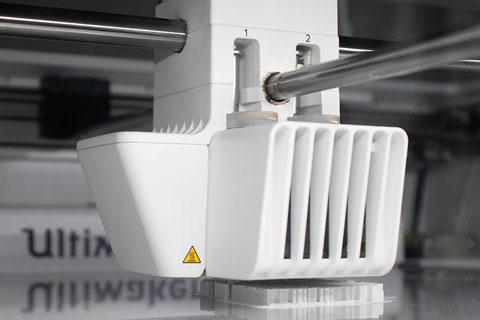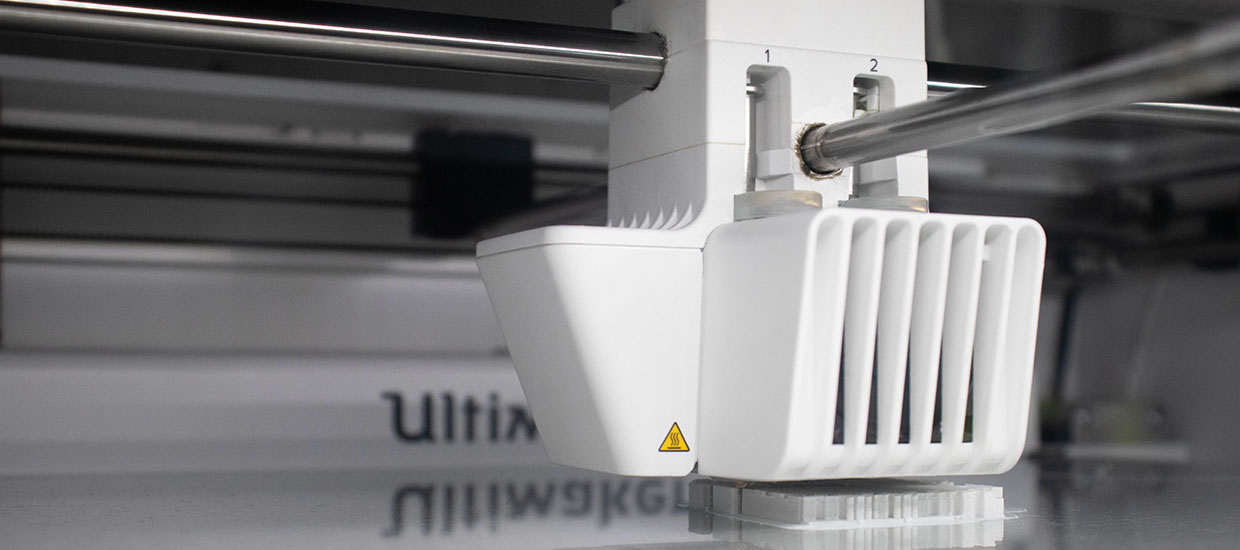There are four new Ultimaker F.D.M. 3D printers. Two are Ultimaker 3 Extended and two are Ultimaker S5, the largest FDM printer-to-date by Ultimaker. All have dual extruders and will have white PLA as printing material and PVA as support material.
In addition to the Ultimaker printers in the Fabrication Lab, students have access to six Sindoh 3DWox Printers available 24/7 located in Murphy Design Studio. Filamet for the Sindoh printers can be purchased on Amazon.com by searching for “Sindoh 3D Wox Refill PLA Filament”. Additionally, some filament may be available for purchase through the Fabrication Lab.





